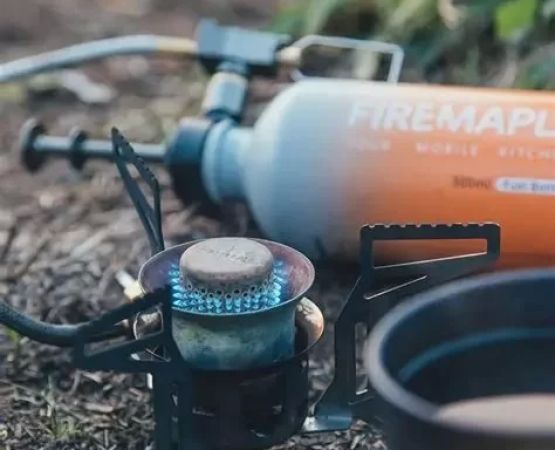How to Deal with Tick Bites and Lyme Disease Prevention
1. Understanding Tick Bites
Tick bites are a common occurrence for people who spend time outdoors, particularly in wooded areas, tall grasses, or places where deer or other animals are present. While most tick bites do not lead to serious health problems, they can transmit diseases like Lyme disease, which can lead to serious health issues if left untreated. In this article, we’ll explain how to deal with tick bites effectively, and how you can protect yourself from Lyme disease.
2. Identifying Tick Bites
Ticks are small, spider-like creatures that latch onto the skin to feed on blood. They can be difficult to spot due to their small size, especially during the early stages of the bite. Ticks can be as small as a poppy seed and may appear in different colors, ranging from brown to reddish-brown. It’s important to check your skin thoroughly after spending time outdoors, especially in areas where ticks are prevalent.
2.1 Symptoms of a Tick Bite
After being bitten, you may notice a small bump at the site of the bite. This is usually not painful, but it can sometimes become red, swollen, or itchy. In some cases, you may not even realize you’ve been bitten, as ticks can latch on without causing immediate discomfort. If the tick is carrying a disease, the symptoms of Lyme disease may develop in a few days to weeks after the bite.
2.2 Recognizing Lyme Disease Symptoms
One of the earliest and most recognizable signs of Lyme disease is the bull’s-eye rash that appears around the bite site. This rash is typically red with a lighter center and is usually painless. However, not everyone with Lyme disease develops this rash. Other symptoms of Lyme disease include fever, fatigue, joint pain, and headaches. If you experience any of these symptoms after a tick bite, it is essential to seek medical attention as soon as possible to prevent further complications.
3. How to Properly Remove a Tick
If you find a tick attached to your skin, it’s crucial to remove it as soon as possible to reduce the risk of disease transmission. Here’s how to do it properly:
3.1 Step-by-Step Guide to Tick Removal
1. Use fine-tipped tweezers to grasp the tick as close to the skin’s surface as possible.
2. Pull upward with steady, even pressure—do not twist or jerk the tick, as this may cause parts of it to break off and remain in the skin.
3. After removal, clean the area with rubbing alcohol, an iodine scrub, or soap and water.
4. Dispose of the tick by placing it in a sealed bag or container. Never crush it with your fingers.
3.2 What to Do If the Tick's Mouth Parts Are Left Behind
If you’re unable to remove all of the tick, or if the mouth parts break off and stay embedded in your skin, don’t panic. These parts may cause irritation but are not usually harmful. Clean the area thoroughly and apply antiseptic. If you notice any symptoms like a rash or fever later on, seek medical help.
4. Lyme Disease Prevention
Preventing tick bites is the best way to avoid Lyme disease. Here are several measures you can take to protect yourself when spending time outdoors:
4.1 Wear Protective Clothing
When heading into tick-prone areas, make sure to wear long sleeves, long pants, and closed shoes. Tucking your pants into your socks can help prevent ticks from crawling up your legs. Light-colored clothing can also help you spot ticks more easily.
4.2 Use Tick Repellent
Apply insect repellent that contains DEET on exposed skin and clothing to help keep ticks away. There are also tick-specific repellents containing permethrin that can be applied to clothing, shoes, and gear.
4.3 Avoid Tick-Prone Areas
If possible, try to avoid areas with heavy vegetation, tall grasses, and leaf litter where ticks thrive. Stick to the center of trails when hiking and avoid brushing against vegetation.
4.4 Check for Ticks Regularly
After spending time outdoors, always check yourself, children, and pets for ticks. Pay particular attention to areas where ticks like to hide, such as underarms, behind the knees, in the groin area, and around the ears and scalp. The sooner you find and remove a tick, the lower your risk of contracting Lyme disease.
5. Treatment and Medical Attention
If you develop symptoms of Lyme disease after a tick bite, early treatment with antibiotics is usually very effective in preventing the infection from spreading. If caught early, Lyme disease can typically be treated successfully with a course of oral antibiotics. However, if left untreated, the disease can cause severe complications, including joint problems, neurological issues, and heart problems.
If you’re unsure whether you’ve been exposed to ticks or Lyme disease, it’s always best to consult a healthcare provider for proper diagnosis and treatment. The earlier you start treatment, the better your chances of a full recovery.
6. Conclusion: Protect Yourself from Ticks
While ticks are common in outdoor environments, the risk of Lyme disease can be significantly minimized with proper precautions and early detection. Always be vigilant when spending time outdoors in tick-prone areas, and take steps to protect yourself from tick bites. If you do find a tick on your skin, removing it promptly and correctly can help prevent the spread of Lyme disease.
For those who enjoy outdoor adventures, be sure to prepare for your next hiking or camping trip with the right tick prevention methods. Consider booking a stay at a Pine Cliff Resort, where you can explore nature while ensuring your safety from ticks and other environmental risks.







